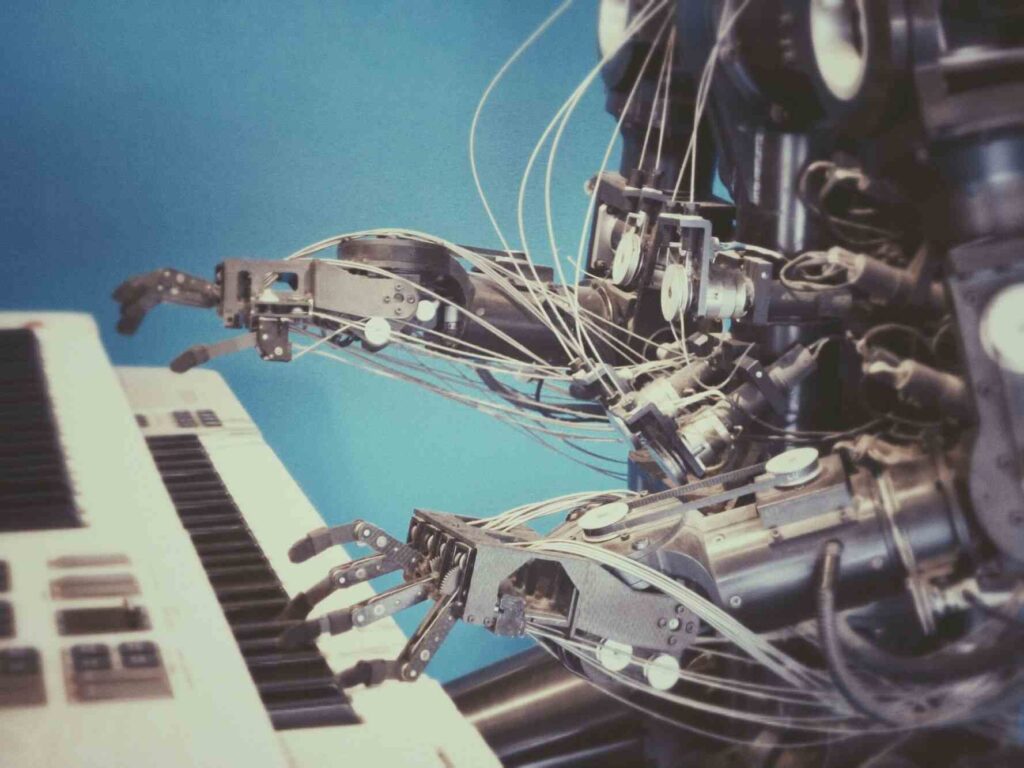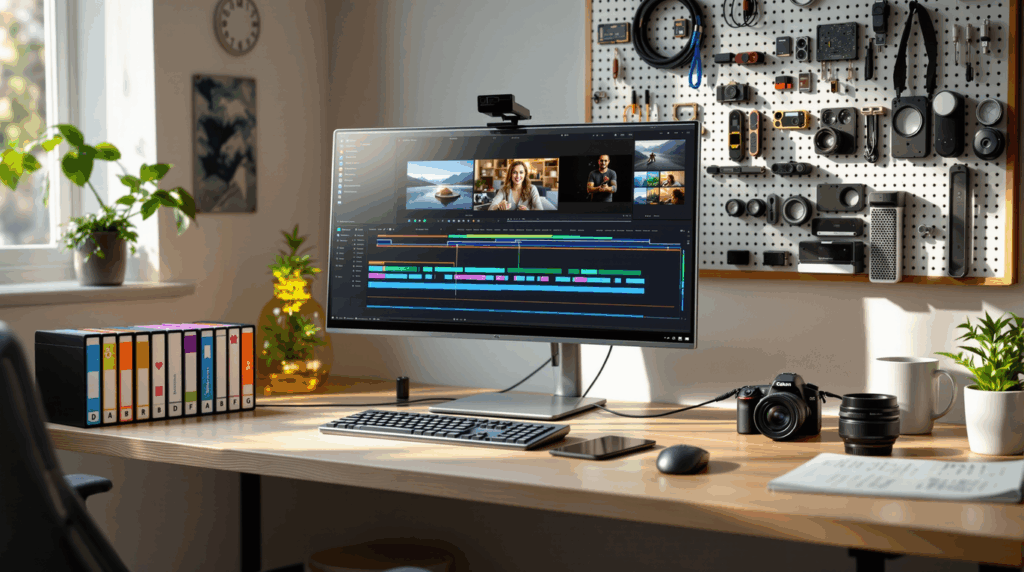If 2023’s AI can generate original architectural designs, poems, and code, it’s no surprise that musical compositions are on the list too. In recent years, AI advancements have made it possible for machines to generate music (with vocals) that may come to rival human musicians. From pop songs to classical compositions, generative AI has the ability to create songs from scratch that are not only technically proficient but also emotionally impactful.
Read on to find out the top tools to generate AI-powered music and how it will impact the industry.
But first, let’s do a quick breakdown of how AI tools generate music.

How does AI-generated music come to life?
You can compose music via AI tools with three approaches: rule-based generative AI, machine learning models, and neural network-based models. Here’s a brief on each generative AI model to give you more clarity:
- Rule-based generative AI: Rule-based AI systems use a set of rules/prompts given by the user that guides the music generation. For example, you could specify that a certain melody should be played in a minor key, or that a specific rhythm should be used.
- Machine learning generative AI: In this approach, the AI system is trained on a large dataset of existing music to learn patterns and styles. The system can then generate new music based on statistical models. For example, a machine learning model could be trained on classical music to generate new pieces in a similar style.
- Neural network-based models: Neural networks are designed to mimic the structure and function of the human brain, and they are especially good at processing complex and unstructured data, such as audio. The AI system is trained on a large dataset of existing music to learn patterns and styles to generate new, unique pieces of music.
Different tools operate on different approaches and heavily rely on the user’s requests and the data available for training the AI system.
With that said, here are 5 impressive AI music-generation tools you need to know about:
7 Music AI You Need To Know About
Amper Music
Amper Music is a rule-based generative AI music platform that allows users to create original music compositions by selecting a desired mood, genre, and length. The AI system uses a set of predefined rules to generate music, such as the melody, harmony, and rhythm, based on the specified style or genre.
Amper Music’s AI system is user-friendly and does not require any musical knowledge or technical skills, making it accessible to a wide range of users who wish to add a specific style of music to their videos.
AIVA (Artificial Intelligence Virtual Artist)
AIVA is a machine learning-based generative AI music platform that allows users to compose music in different styles and genres.
The AI system uses machine learning algorithms to analyze and understand existing musical patterns, and then generate unique and diverse music based on those patterns. AIVA’s platform is designed for professional musicians and music producers who are looking for a fast and efficient way to generate music.
Jukin Media
Jukin Media uses generative AI to create videos and music for its users. Similar to AIVA, the company’s AI system relies on existing musical to compose new music.
Jukin Media also has a team of human music producers who review and edit AI-generated music to ensure quality and suitability for commercial use.
Jukebox by OpenAI
OpenAI is a research organization that has developed a neural network-based generative AI system — Jukebox — for music creation. The AI system uses deep learning algorithms, such as artificial neural networks, to generate music. By training on large datasets of existing music, the neural network can learn and understand the patterns and structures of music, and then generate new and original compositions.
OpenAI’s generative AI system is designed for research purposes, and the company is exploring various applications of the technology in the music industry.
Melodrive
Melodrive allows users to generate music in real time. The AI system also relies on existing musical patterns to create new ones. Melodrive’s AI expands across a diverse range of styles and genres, and the company has a team of human music producers who review and edit AI-generated music to ensure its quality and suitability for commercial use.
Melodrive’s platform is designed for video game developers, film and TV producers, and other creative professionals who need to generate music quickly and efficiently.
MusicLM
MusicLM by Google is by far one of the best AI music models, which generates high-fidelity music based on text input because of its audio quality and ability to pick up descriptions. Moreover, this tool can expand existing tunes and convert them into different sounds like humming and whistling.
Larnii
Larnii is an advanced AI DJ that can mix and create new music 24*7 as per your preference. Just pick up the style you like, say Electronic beats, and it will start playing the mix. It has options for mood selectors and tempo to improve your experience. Unlike humans, it has a vast music collection, and it’s always learning and adapting to trends. You can play larnii on desktop and mobile.
What lies ahead?
As an AI-powered company, we are excited about the future. We’re always experimenting with artificial intelligence and technology. Here are some positive effects we believe to see in the coming years:
- Improved productivity: AI music generators can streamline the music production process, increasing efficiency and productivity for music creators and industry professionals. It can automate repetitive tasks like beat detection, tempo estimation, audio editing and mastering, and instrument and vocal separation.
- New revenue streams: AI-generated music can open up previously untapped revenue streams, such as licensing and royalty payments for music, creating new business opportunities for the music industry.
- Innovative tools for creativity: Musicians and composers can use these tools in the creative process to spark inspiration by producing new sounds and melodies.
- Fresh job opportunities: The integration of AI tools in the music industry can open up new job opportunities in fields such as AI development, music production, and music technology.
- Streamlined training opportunities: AI music toolkits like yousician are already teaching aspiring music producers the lay of the land. Since these tools can be available 24/7, no more will students have to wait for their next training session with a human professional for feedback. With AI managing the repetitive tasks that can take up time, new training and development opportunities for producers are opened up.
- Reduced barriers to entry: With creators having access to AI music production at their fingertips, such software has the potential to create a more inclusive community for for musicians and composers. It can make it easier for new talent to emerge and succeed in the industry.

Will AI replace humans?
The integration of generative AI in the music industry is sure to bring about significant changes, but these can be both good and bad. Some see this as a utopia – where music created on demand is accessible to everyone. But others picture a dystopia where the soul of music has been left behind- replaced, instead, by sterile, computer-generated compositions.
If you’re wondering whether the days of musicians, producers, and composers are numbered -soon to be taken over by machines capable of generating an endless supply of audio hold that thought.
Similar to writing, artistic composition, and design, the role of AI must not be overstated when it comes to creation. In our article on generative AI and the future of work, we talk about what the future of a creator economy looks like, and it isn’t as bleak as you might think. The true wizardry of AI-generated music lies in its ability to learn and adapt.
For now, at least, curation, fine-tuning, and reviewing, still remain under our purview…


